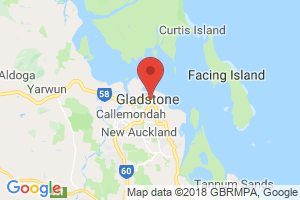Station overview—Memorial Park

Map marker is indicative only. It does not reflect the exact location of the station.
See all stations in Gladstone region.
- Monitoring period
- 1 July 2009–
- Parameters monitored
Current measurements at 4pm 5 December 2025
| Parameter | Measurement | Running average |
|---|---|---|
| Nitrogen dioxide | 0.004ppm | 0.004ppm (1hr avg) |
| Ozone | 0.021ppm | 0.021ppm (8hr avg) |
| Sulfur dioxide | 0ppm | 0ppm (1hr avg) |
| Parameter | Measurement | Running average |
|---|---|---|
| Benzene | 1.6ppb | 2.1ppb (24hr avg) |
| Toluene | 0ppb | 0.2ppb (24hr avg) |
| Xylene | - | 4.1ppb (24hr avg) |
| Formaldehyde | 0ppb | 0.5ppb (24hr avg) |
Legend to air quality category colours about category values
- Good
- Fair
- Poor
- Very poor
- Extremely poor
None of the data is validated (0% validated, 0/7 records)
About air quality categories
Air quality categories are used to make it easier to interpret air quality data by reducing the complexity associated with different pollutant concentration units and air quality guideline values.
Each air quality measurement from a monitoring station is assigned an air quality category rating based on comparison of the measurement value against the relevant air quality guideline. Five colour-coded air quality categories are used, being ‘Good’ (green), ‘Fair’ (yellow), ‘Poor’ (orange), ‘Very poor’ (red) or ‘Extremely poor’ (dark red). Values greater than the air quality guideline will be appear as ‘Poor’, ‘Very poor’ or ‘Extremely poor’.
About these parameters
- Nitrogen dioxide
Nitrogen dioxide is an acidic and highly corrosive gas. Nitrogen oxides are critical components of photochemical smog. Long-term exposure to high levels of nitrogen dioxide can cause chronic lung disease and affect the senses.
The guideline for Nitrogen dioxide is 0.08ppm (1hr avg).
Nitrogen dioxide is measured in parts per million.
- Ozone
Ozone is a colourless, highly reactive gas with a distinctive odour. The upper atmosphere ozone layer (at altitudes of 15–35km) protects the earth from harmful ultraviolet radiation from the sun. The ozone layer reduction represents a global atmosphere issue.
The guideline for Ozone is 0.1ppm (1hr avg) and 0.065ppm (8hr avg).
Ozone is measured in parts per million.
- Sulfur dioxide
Sulfur dioxide (SO2) is a colourless gas with a sharp, irritating odour. It is produced by burning fossil fuels and by the smelting of mineral ores that contain sulfur.
The guideline for Sulfur dioxide is 0.1ppm (1hr avg).
Sulfur dioxide is measured in parts per million.
- Benzene
Benzene is an organic compound occurring naturally in fossil fuels and entering the atmosphere from both natural processes and human activities that involve the combustion of organic matter. Long-term exposure results in an increased incidence of blood and immune system disorders, including anaemia and leukaemia.
The guideline for Benzene is 250ppb (24hr avg).
Benzene is measured in parts per billion.
- Toluene
Toluene is a colourless organic liquid. Burning organic matter, such as wood, coal and petroleum products generates toluene, and it occurs naturally in crude oil. Motor vehicle emissions are the main source of toluene in the urban air environment, although evaporative losses from fuel storage facilities and service stations, as well as the use of toluene-based solvents and thinners are other contributors.
The guideline for Toluene is 1000ppb (24hr avg).
Toluene is measured in parts per billion.
- Xylene
Burning organic matter, such as wood, coal and petroleum products generates xylene, and it also occurs naturally in crude oil. Motor vehicle emissions are the predominant source of xylene in the urban air environment.
The guideline for Xylene is 250ppb (24hr avg).
Xylene is measured in parts per billion.
- Formaldehyde
Formaldehyde in its normal state is a colourless gas. Low levels of formaldehyde are part of naturally occurring decomposition processes. In urban environments formaldehyde emission sources include motor vehicle exhaust, domestic solid fuel and gas combustion, goods manufactured with formaldehyde-based glues and resins and tobacco smoke.
The guideline for Formaldehyde is 40ppb (24hr avg).
Formaldehyde is measured in parts per billion.


